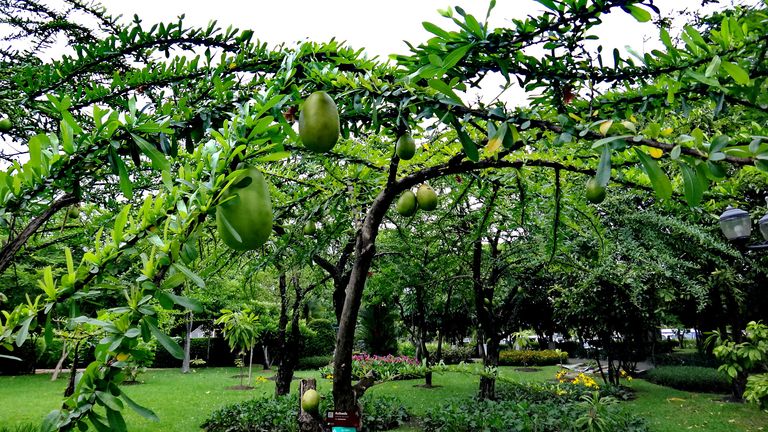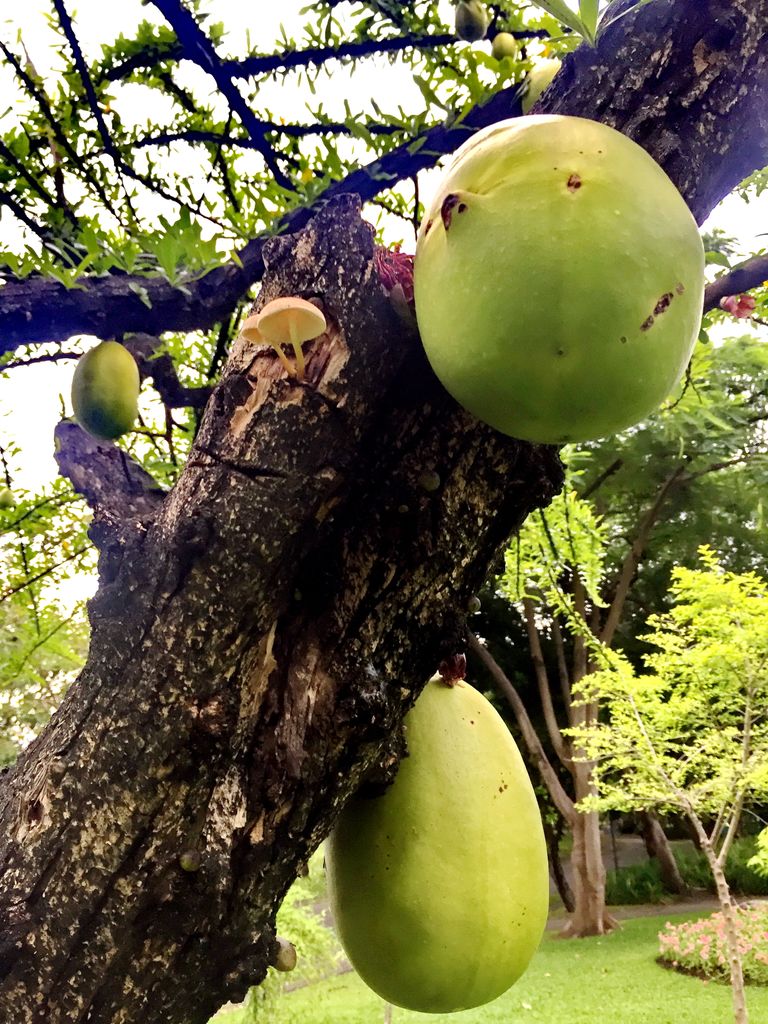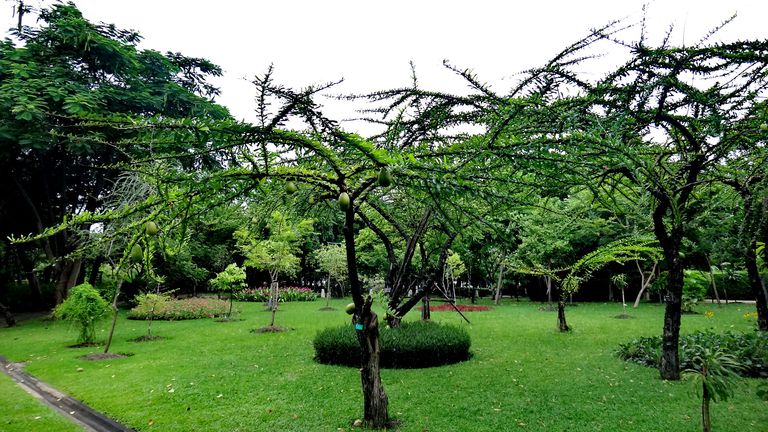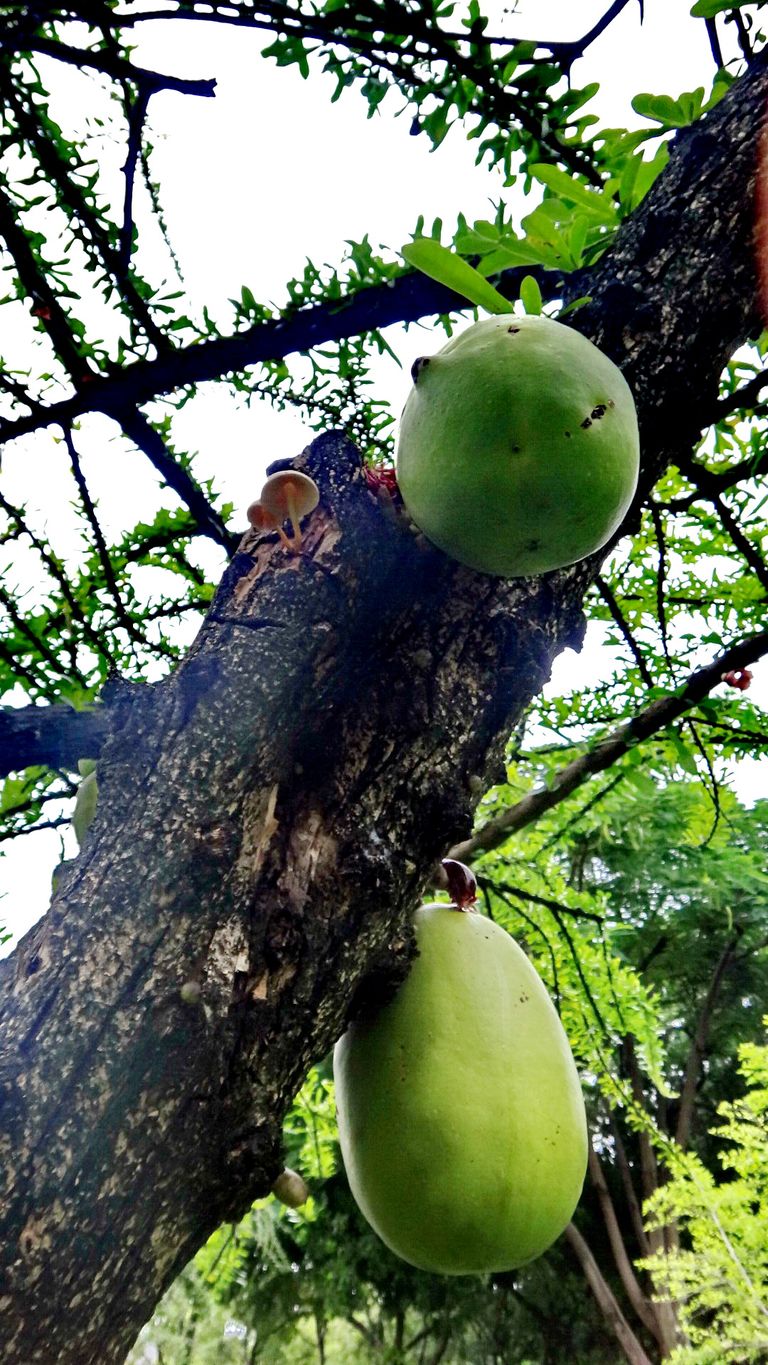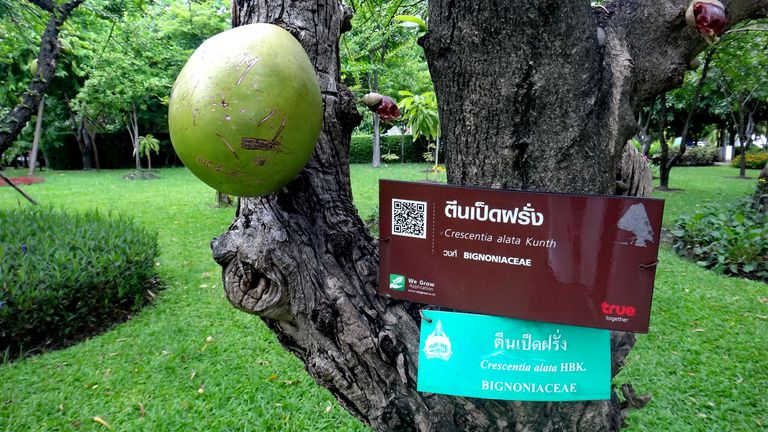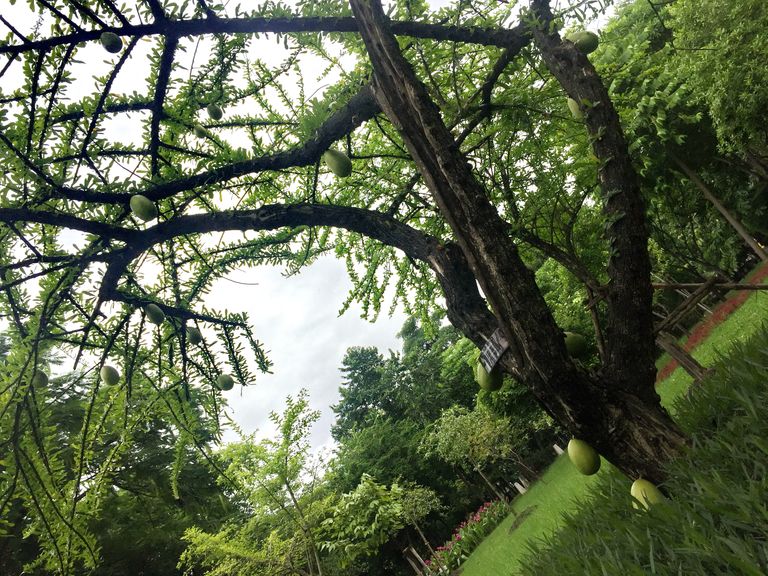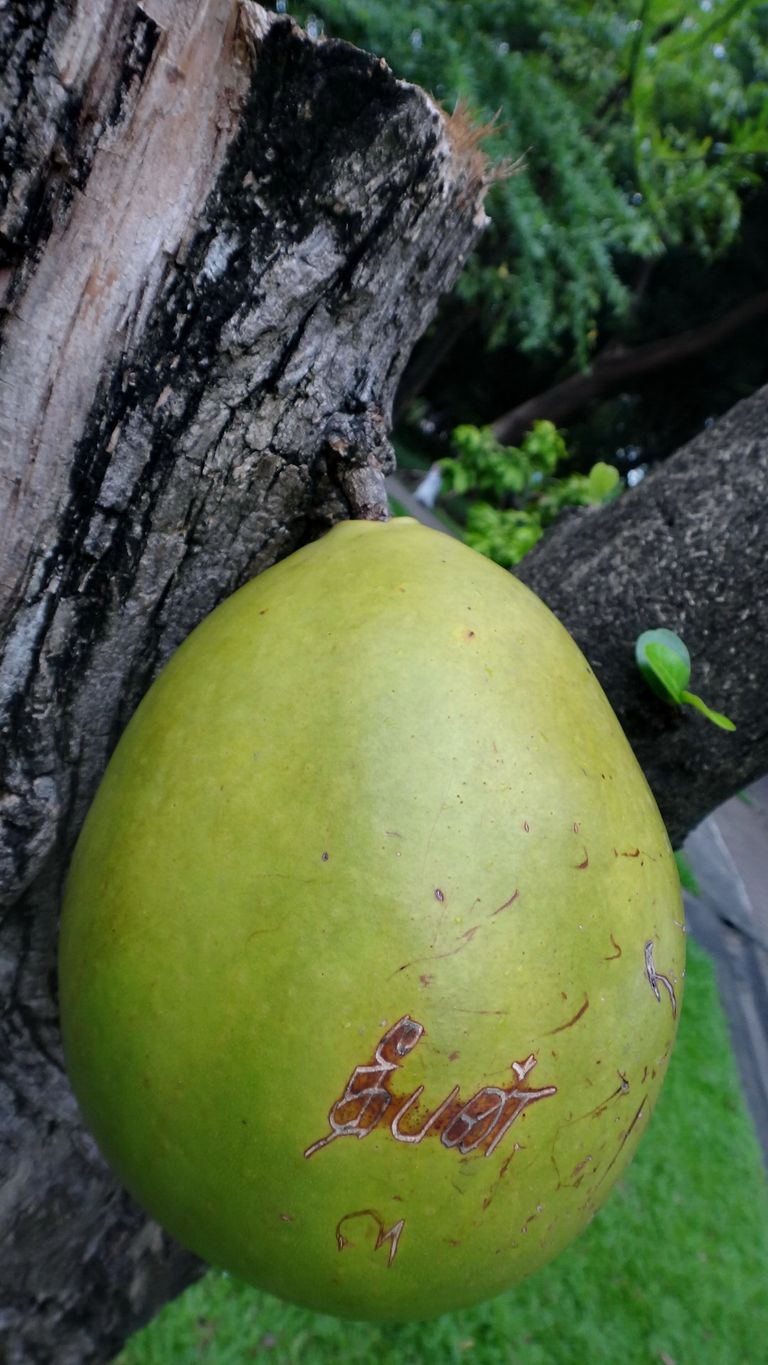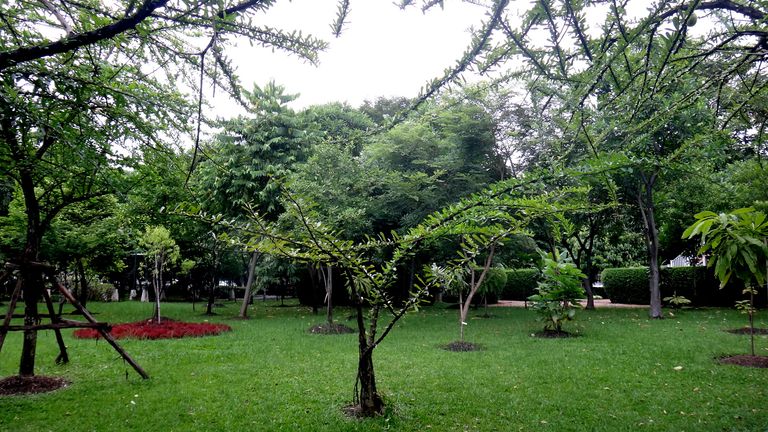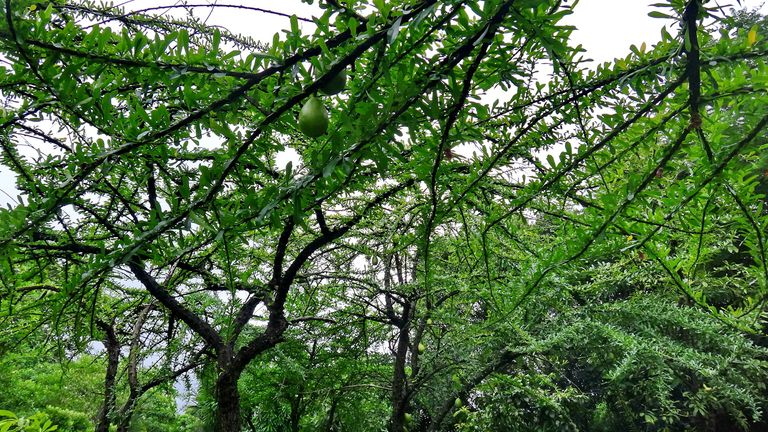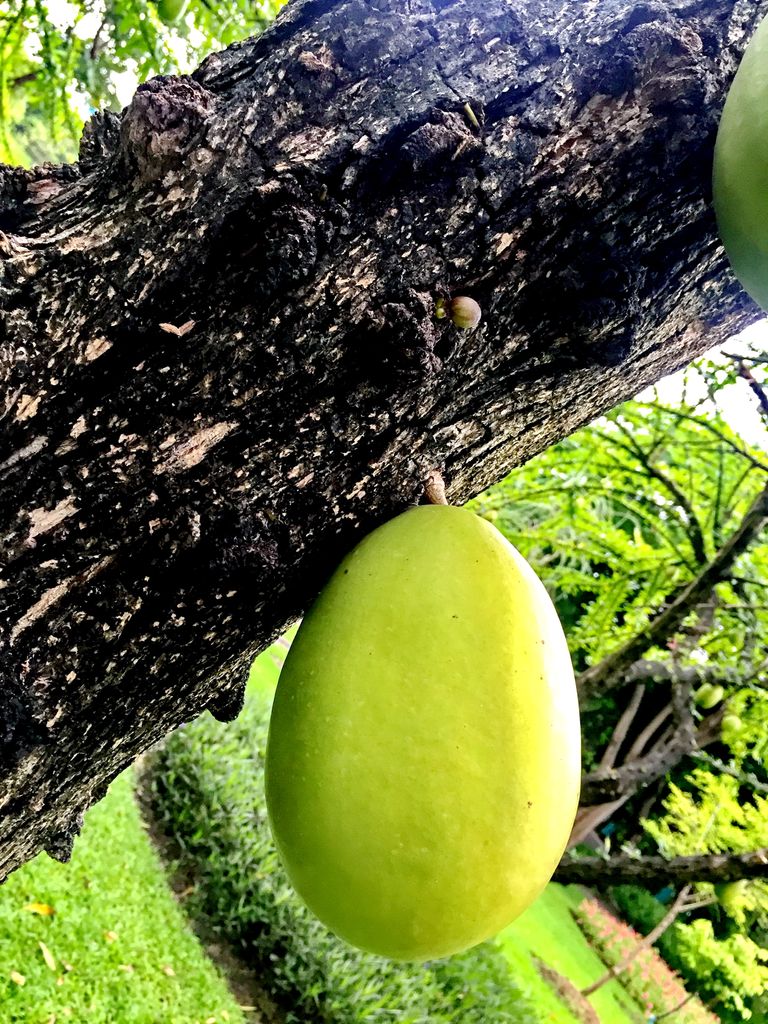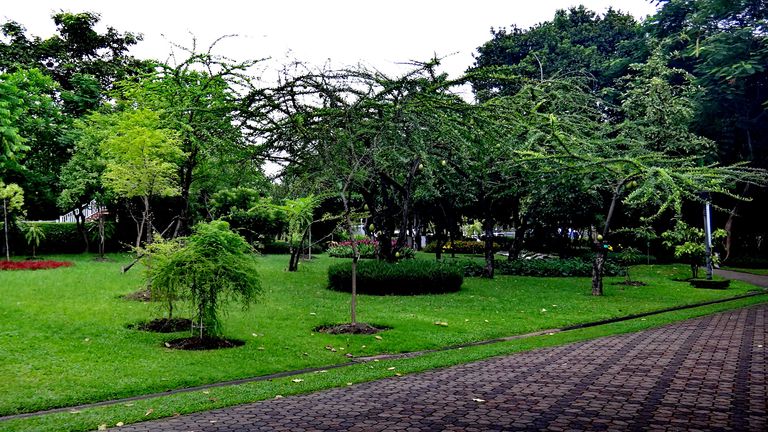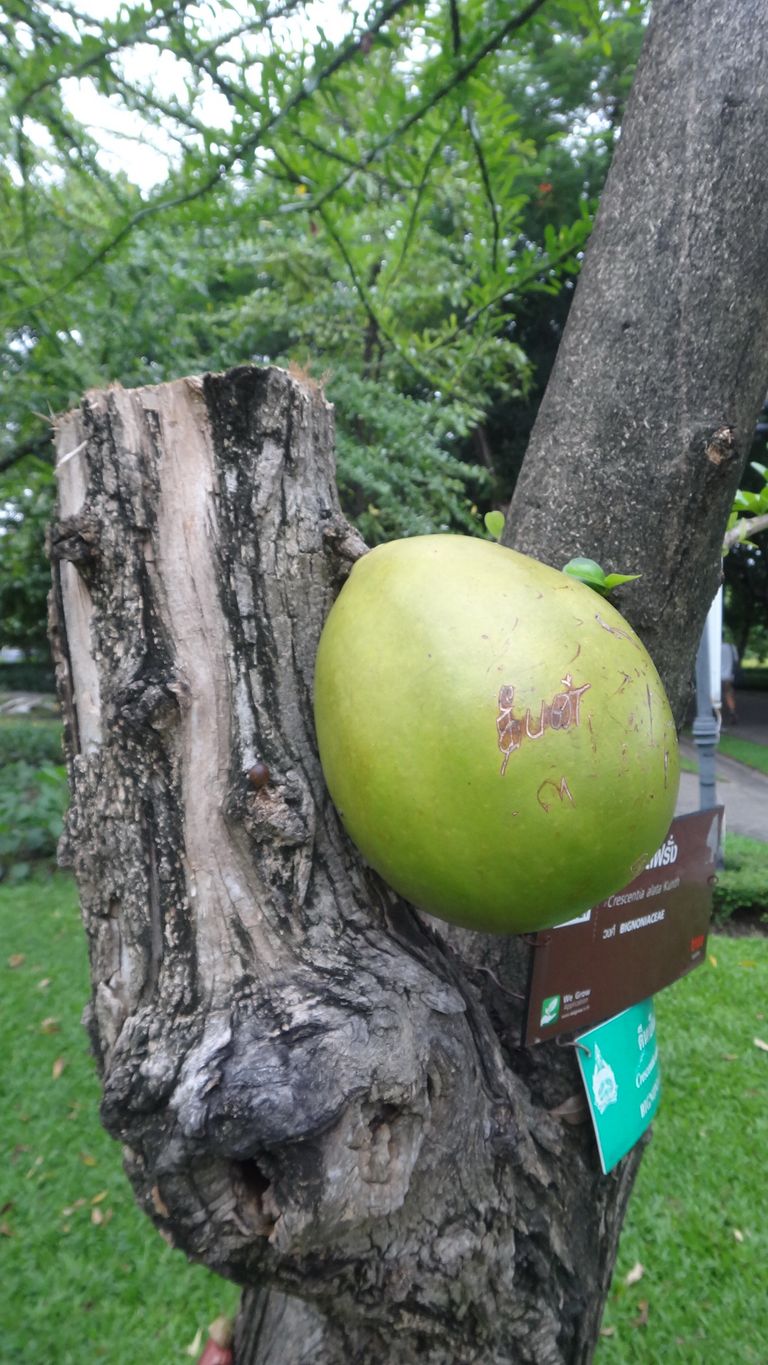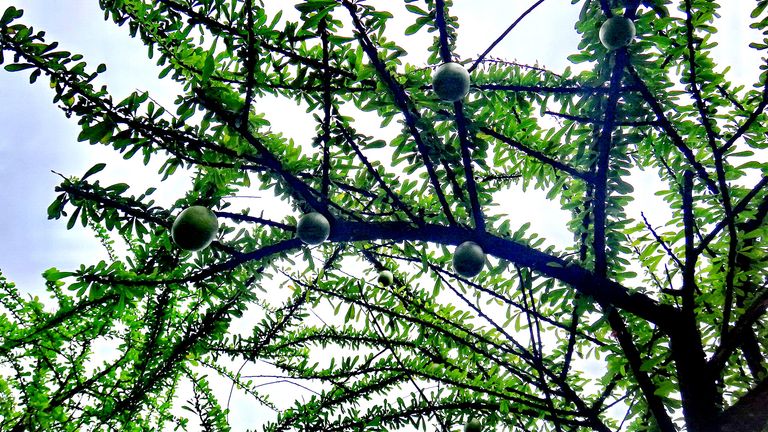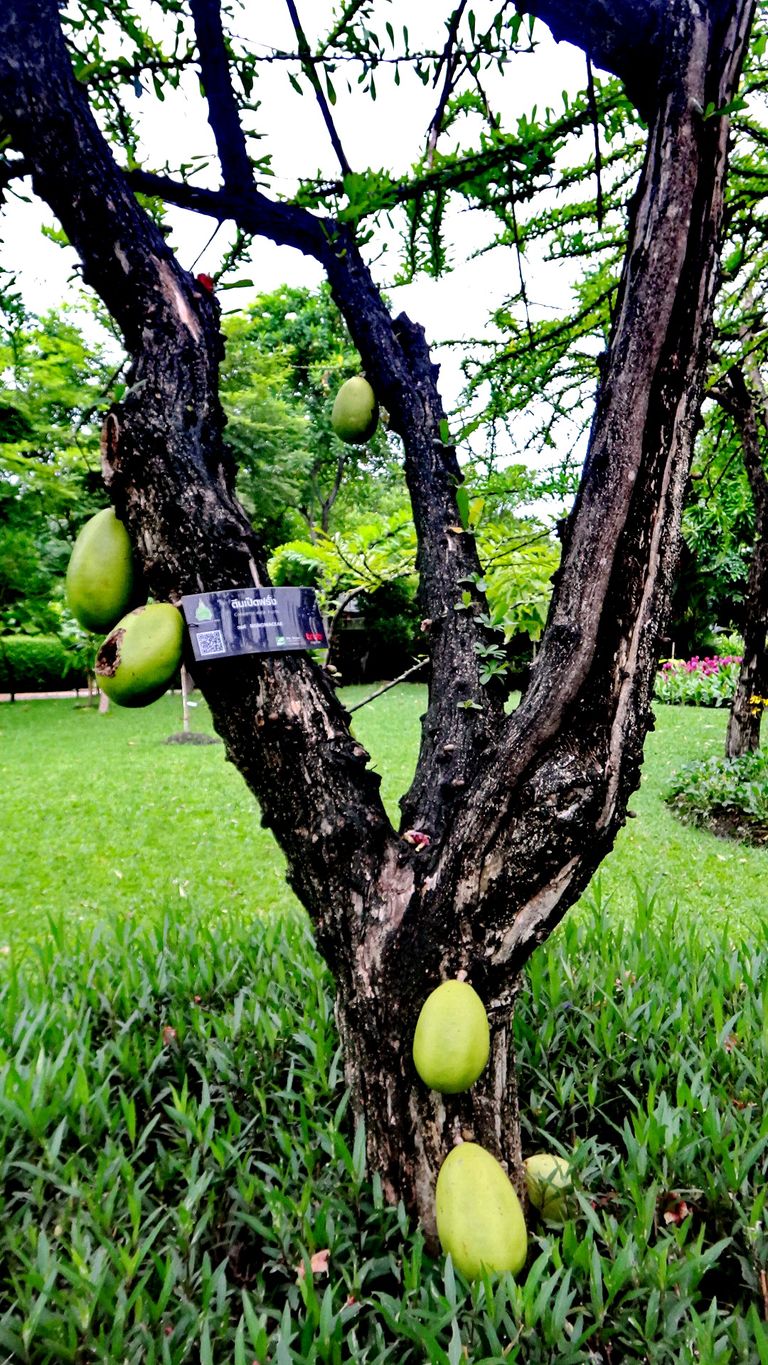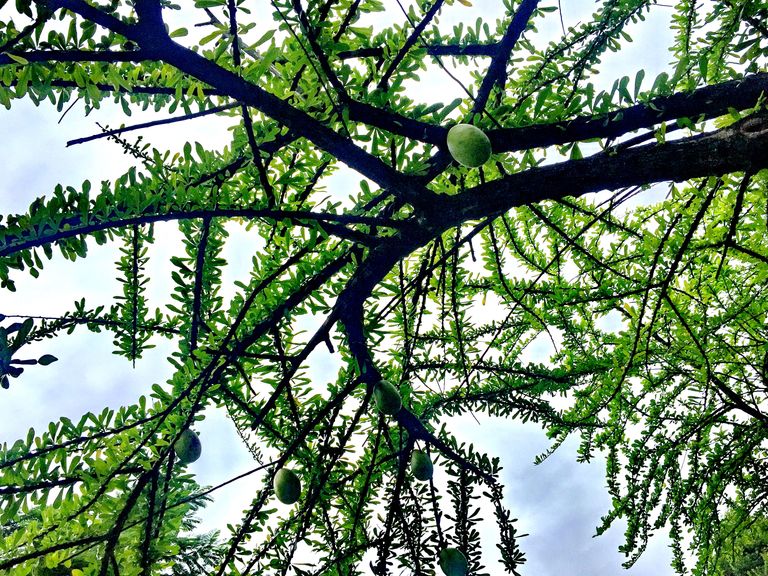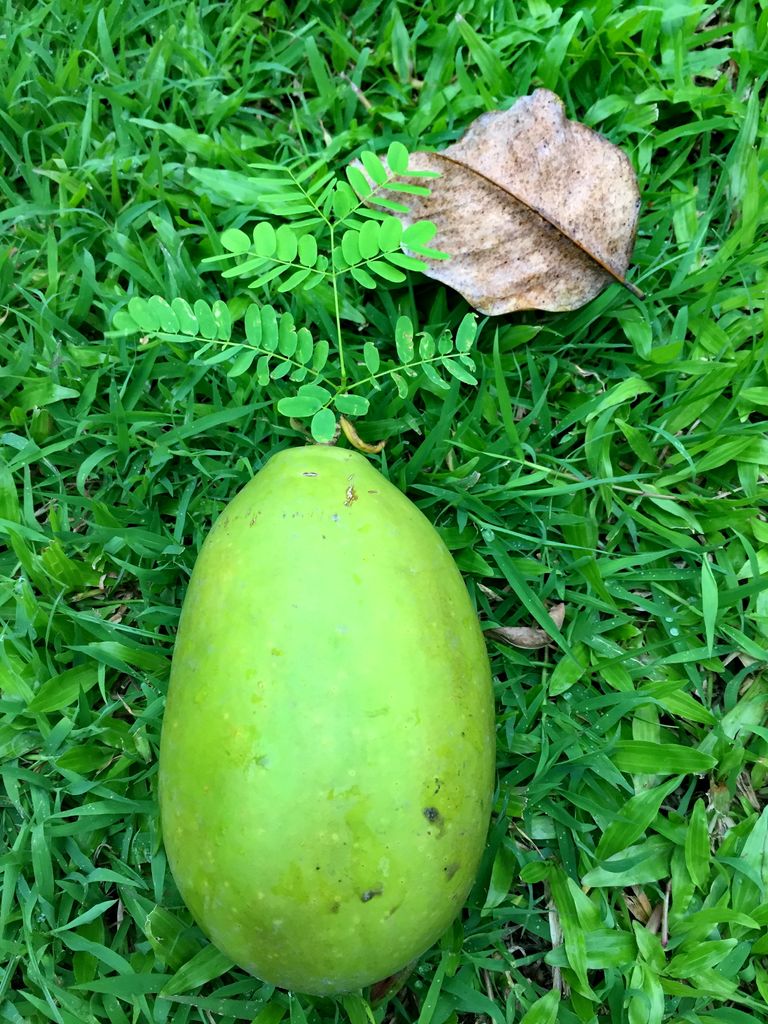The Crescentia alata Kunth, commonly known as the Mexican calabash tree or “jícara,” is a fascinating tree native to Mexico and Central America. Distinguished by its unusual shape, leathery leaves, and gourd-like fruits, this remarkable tree has intrigued botanists, environmentalists, and local communities for centuries. Known for its unique adaptations, medicinal uses, cultural significance, and environmental benefits, Crescentia alata stands out as a testament to the incredible diversity and utility of tropical flora.
Distinctive Appearance and Unique Characteristics
The Crescentia alata tree is easily recognizable due to its bottle-shaped trunk and broad, arching branches that create a canopy of vibrant, elongated leaves. It can grow up to 10 meters tall, with its distinctive spreading shape allowing it to thrive in open landscapes and tropical savannas. The tree produces beautiful, bell-shaped flowers that are light green or yellow, often tinged with purple, adding a splash of color to the landscape. One of its most remarkable features is its large, spherical fruit, which resembles a gourd or calabash, and can grow up to 15 centimeters in diameter. When mature, the fruit becomes a hard, woody shell that is both resilient and versatile, serving various practical and artistic purposes.
Ecological Role and Environmental Benefits
Crescentia alata plays a significant role in its native ecosystems, supporting both flora and fauna in numerous ways. The tree’s flowers bloom directly from the trunk, a trait known as cauliflory, which makes nectar accessible to pollinators such as bats, bees, and butterflies. By attracting these pollinators, the tree contributes to the overall health and biodiversity of its ecosystem. The Crescentia alata’s gourd-like fruits also serve as a source of food for animals, including birds, insects, and mammals, which feed on the pulp and seeds, aiding in seed dispersal.
Additionally, the tree is well-adapted to thrive in hot, dry climates and is drought-resistant, making it valuable for reforestation projects in arid regions. Its extensive root system helps prevent soil erosion, improves soil structure, and enhances water retention, making Crescentia alata an important plant for land conservation efforts. This resilience to harsh environments also highlights its potential as a climate change-resistant species, valuable in restoring degraded lands.
Traditional Uses and Cultural Significance
The Crescentia alata tree holds deep cultural significance in the communities where it grows. Indigenous and rural populations across Mexico and Central America have long utilized the tree for various purposes, particularly its hard-shelled fruits, which are dried and crafted into bowls, containers, and musical instruments. The fruits, known as “jícaras” in Mexico, are used to create durable drinking vessels, ladles, and storage containers, all of which are decorated with intricate carvings and designs, reflecting the artistry and craftsmanship of local traditions.
In addition to its practical uses, the tree holds symbolic value in many cultures. The Crescentia alata’s longevity and resilience are often associated with endurance and strength, and the jícaras made from its fruit are seen as symbols of nourishment and sustainability. In some communities, decorated jícaras are also used in ceremonies and rituals, reflecting the tree’s role as a cultural icon woven into the fabric of daily life.
Medicinal and Health Benefits
Beyond its aesthetic and practical uses, the Crescentia alata tree also possesses medicinal properties, making it an important natural remedy in traditional herbal medicine. The fruit, leaves, and bark of the tree are used in various treatments for ailments ranging from respiratory infections to digestive issues. In traditional medicine, the pulp of the fruit is believed to have anti-inflammatory properties and is often used as a natural remedy for colds, coughs, and sore throats. The bark, when brewed into a tea, is said to aid in digestion and relieve stomach discomfort, while the leaves can be used in poultices to reduce swelling and inflammation.
While scientific research on the medicinal effects of Crescentia alata is still developing, early studies have shown promising results regarding its potential antimicrobial and antioxidant properties. The continued study of this tree's medicinal qualities may reveal even more uses, highlighting the value of conserving this species as a natural resource for future generations.
Conservation and Future Potential
Despite its resilience, Crescentia alata faces challenges due to habitat loss and deforestation in many parts of its native range. Agricultural expansion, urban development, and land degradation have all contributed to the reduction of the tree’s natural habitats. Conservation efforts are critical to ensure the survival of Crescentia alata, not only for its environmental benefits but also for its cultural, medicinal, and economic significance. Promoting sustainable use of the tree’s fruits and encouraging local communities to participate in conservation initiatives can play a key role in protecting this remarkable species.
In recent years, there has been a growing interest in the potential of Crescentia alata for sustainable product development. The hard shells of the fruits, for instance, are increasingly popular in eco-friendly crafts, and they have been used to create environmentally friendly packaging, home decor, and reusable containers. This growing interest reflects an appreciation for the tree’s sustainable qualities and opens up new possibilities for preserving the Crescentia alata while providing economic opportunities for local artisans and communities.
Conclusion
The Crescentia alata Kunth, with its distinct beauty, rich cultural history, and ecological importance, stands as a testament to the unique wonders of nature. It is more than just a tree; it is a symbol of resilience, sustainability, and heritage for the communities that have relied on it for generations. From its value as a source of nourishment for wildlife to its traditional uses as a practical and artistic resource, the Crescentia alata is an extraordinary plant that deserves recognition and protection. Conservation and sustainable use of this remarkable tree not only help preserve biodiversity but also honor the invaluable cultural legacy it represents, ensuring that future generations can continue to marvel at the beauty and utility of this amazing species.

